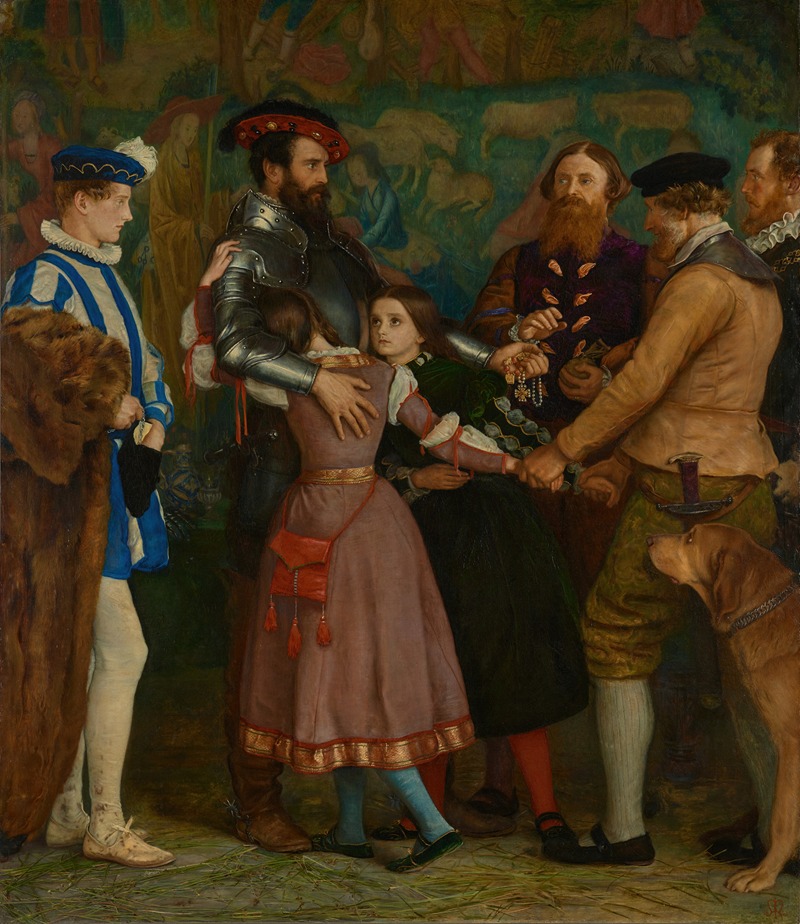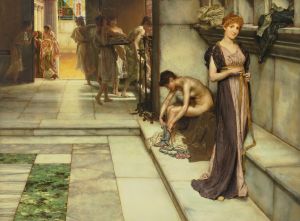
The Ransom
A hand-painted replica of Sir John Everett Millais’s masterpiece The Ransom, meticulously crafted by professional artists to capture the true essence of the original. Each piece is created with museum-quality canvas and rare mineral pigments, carefully painted by experienced artists with delicate brushstrokes and rich, layered colors to perfectly recreate the texture of the original artwork. Unlike machine-printed reproductions, this hand-painted version brings the painting to life, infused with the artist’s emotions and skill in every stroke. Whether for personal collection or home decoration, it instantly elevates the artistic atmosphere of any space.
Sir John Everett Millais's painting The Ransom is a work created in 1860 by the renowned British artist, who was a founding member of the Pre-Raphaelite Brotherhood. The painting, executed in oil on canvas, reflects Millais's characteristic attention to detail, vibrant use of color, and narrative depth, hallmarks of the Pre-Raphaelite style.
The composition of The Ransom depicts a dramatic medieval scene. It shows a knight, clad in armor, delivering a ransom to two armed men in exchange for the release of three young girls. The girls, dressed in white, symbolize purity and innocence, and their expressions convey a mix of fear and relief. The setting is a lush, wooded landscape, meticulously rendered with Millais's signature precision, emphasizing the natural beauty of the environment. The interplay of light and shadow in the painting enhances its emotional intensity and draws the viewer's attention to the central figures.
Millais's choice of subject matter reflects the Victorian fascination with medieval themes and chivalric ideals, which were popular during the 19th century. The painting does not illustrate a specific historical event or literary source but instead evokes a general sense of medieval romance and drama. This approach was typical of the Pre-Raphaelites, who often sought to revive the artistic and moral values of the Middle Ages.
The Ransom was well-received upon its exhibition, with critics praising Millais's technical skill and the emotional power of the scene. However, some contemporary commentators noted that the narrative of the painting was somewhat ambiguous, leaving viewers to interpret the story for themselves. This open-ended quality has contributed to the painting's enduring appeal.
Today, The Ransom is recognized as an important example of Millais's mid-career work, showcasing his transition from the highly detailed, symbolic style of his early Pre-Raphaelite period to a broader, more painterly approach. The painting is part of the collection of the Tate Britain in London, where it continues to be appreciated by art enthusiasts and scholars alike.
This artwork remains a testament to Millais's ability to combine technical mastery with compelling storytelling, making it a significant contribution to the canon of 19th-century British art.

















